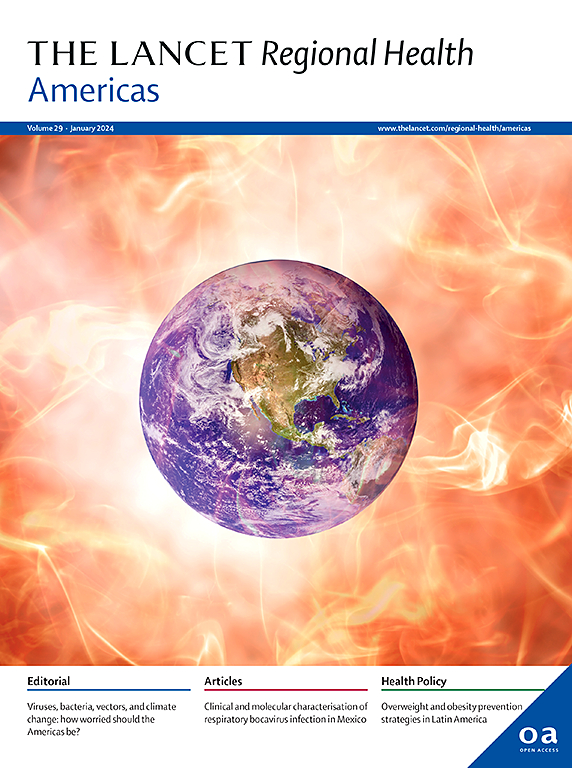美国女性处方阿片类药物使用和物质使用障碍(2006-2022):一项回顾性队列研究
IF 7
Q1 HEALTH CARE SCIENCES & SERVICES
引用次数: 0
摘要
研究表明,多次部署可能对现役女军人和现役女军人家属产生不利影响。人们担心,相关的压力可能会导致持续的处方阿片类药物使用和物质使用障碍(SUD)。我们试图评估2006-2013年期间,与2014-2022年的类似个体相比,服役妇女和女性平民家属持续使用阿片类药物和SUD的发生率,这是一段行动强度增加的时期。方法:我们使用军队卫生系统的索赔数据来确定被诊断为SUD或证明持续使用处方阿片类药物(即6个月不间断使用)的女兵及其家属。将2006-2013年与2014-2022年服役女性及其家属中持续阿片类药物使用(主要结局)和SUD相关(次要结局)的发生率进行比较。多变量对数二项回归用于校正混杂。我们的数据集中没有种族。研究结果包括4,876,209人。研究队列的平均年龄(标准差[SD])为2006-2013年现役26.6岁(SD 8.2), 2014-2022年现役26.0岁(SD 8.0), 2006-2013年家属35.3岁(SD 13.1), 2014-2022年家属33.6岁(SD 12.1)。与2014-2022年的平民家属相比,2006年至2013年服役妇女持续使用处方阿片类药物的风险增加(RR 1.49, 95% CI 1.46-1.53)。2014-2022年,服役女性与家属相比风险较低(RR 0.47, 95% CI 0.45-0.49),而2006-2013年的家属风险也较高(RR 1.58, 95% CI 1.56-1.60)。2006-2013年服役女性发生SUD的风险显著增加(RR 1.07, 95% CI 1.06-1.08)。2014-2022年期间,与家属相比,服役女性的风险较低(RR 0.80, 95% CI 0.79-0.81)。2006-2013年的家属显示出更高的风险(RR 1.24, 95% CI 1.24 - 1.25)。我们发现,在作战强度增加期间(2006-2013年),服役妇女和平民家属持续使用阿片类药物和SUD的风险显著增加。我们相信这些发现反映了情绪压力、支持结构不足和军中性创伤的有害影响。国防部,国防卫生局(#HU00012320021)。本文章由计算机程序翻译,如有差异,请以英文原文为准。
Prescription opioid use and substance use disorder in US women (2006–2022): a retrospective cohort study
Background
Research has shown that multiple deployments may have adverse effects on active-duty servicewomen and women civilian dependents of active-duty servicemembers. There is concern that the associated stress could induce sustained prescription opioid use and substance use disorder (SUD). We sought to evaluate the incidence of sustained opioid use and SUD among servicewomen and women civilian dependents during 2006–2013, a period of increased operational intensity, compared to similar individuals in 2014–2022.
Methods
We employed Military Health System claims data to identify servicewomen and dependents who were diagnosed with SUD or demonstrated sustained prescription opioid use (i.e., six months of uninterrupted use). The incidence of sustained opioid use (primary outcome) and SUD associated (secondary outcome) with 2006–2013 was compared to 2014–2022 among servicewomen and dependents. Multivariable log binomial regression was used to adjust for confounding. Ethnicity was not available in our dataset.
Findings
4,876,209 individuals were included. The average age (standard deviation [SD]) of the cohorts under study were 26.6 (SD 8.2) for active duty 2006–2013, 26.0 (SD 8.0) for active duty 2014–2022, 35.3 (SD 13.1) for dependents 2006–2013 and 33.6 (SD 12.1) for dependents 2014–2022. Compared to civilian dependents in 2014–2022, servicewomen from 2006 to 2013 demonstrated an increased risk of sustained prescription opioid use (RR 1.49, 95% CI 1.46–1.53). In 2014–2022, servicewomen had a lower risk compared to dependents (RR 0.47, 95% CI 0.45–0.49), while dependents in 2006–2013 were also at higher risk (RR 1.58, 95% CI 1.56–1.60). Servicewomen in 2006–2013 were at significantly greater risk of developing SUD (RR 1.07, 95% CI 1.06–1.08). During 2014–2022, servicewomen displayed a lower risk when compared to dependents (RR 0.80, 95% CI 0.79–0.81). Dependents in 2006–2013 showed a higher risk (RR 1.24, 95% CI 1.24–1.25).
Interpretation
We found significant increases in the risks of sustained opioid use and SUD among servicewomen and civilian dependents during a period of increased operational intensity (2006–2013). We believe these findings reflect the deleterious effects of emotional stress, insufficient support structures, and military sexual trauma.
Funding
U.S. Department of Defense, Defense Health Agency (#HU00012320021).
求助全文
通过发布文献求助,成功后即可免费获取论文全文。
去求助
来源期刊

Lancet Regional Health-Americas
Multiple-
CiteScore
8.00
自引率
0.00%
发文量
0
期刊介绍:
The Lancet Regional Health – Americas, an open-access journal, contributes to The Lancet's global initiative by focusing on health-care quality and access in the Americas. It aims to advance clinical practice and health policy in the region, promoting better health outcomes. The journal publishes high-quality original research advocating change or shedding light on clinical practice and health policy. It welcomes submissions on various regional health topics, including infectious diseases, non-communicable diseases, child and adolescent health, maternal and reproductive health, emergency care, health policy, and health equity.
 求助内容:
求助内容: 应助结果提醒方式:
应助结果提醒方式:


